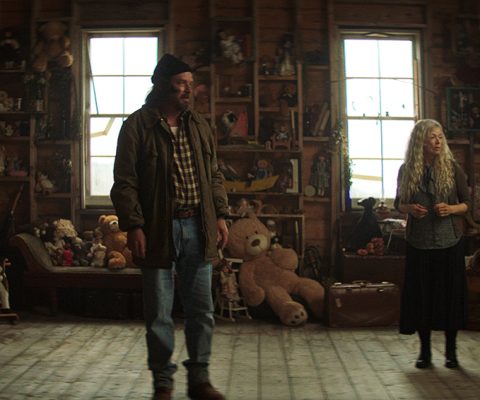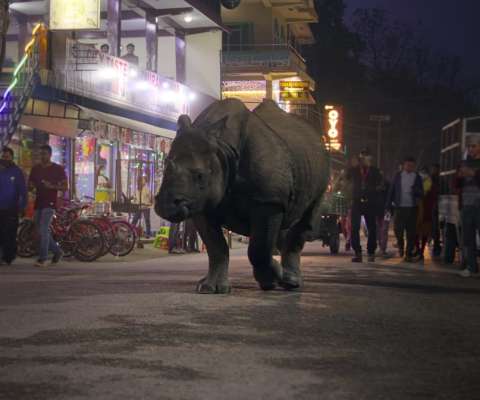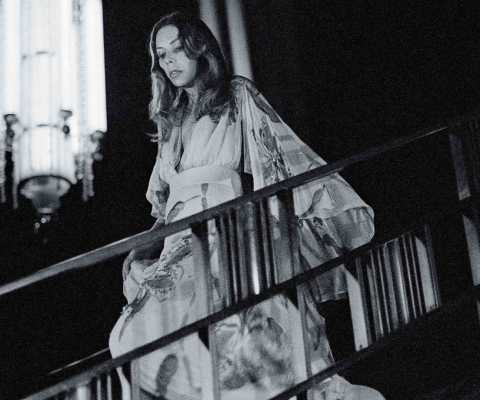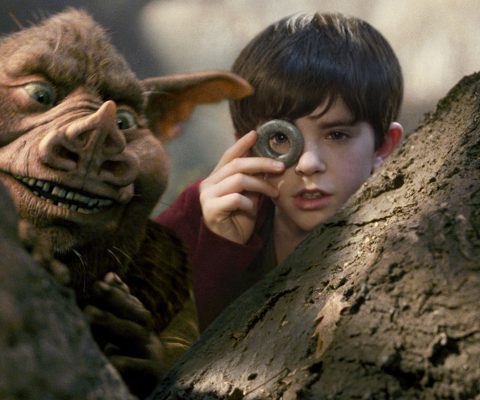12-year-old Mahito Maki (Soma Santoki) lost his mother in a hospital fire and is haunted by dreams of her death. In the wake of the tragedy, Mahito’s father, Shoichi (Takuya Kimura), decides to uproot his son from Tokyo to live closer to his air munitions factory.
As if losing his mother and leaving home wasn’t already challenging for the young boy, he’s also moving in with his very pregnant stepmother, Natsuko (Yoshino Kimura). Making things even more awkward is the fact that Natsuko is Mahito’s aunt and bears a striking resemblance to his dead mother. It turns out Shoichi has a type.
Knowing this new life isn’t for him, Mahito stops trying to make it work. One day, after school, he picks up a rock and cracks his head open. While at home recovering, he keeps encountering a peculiar grey heron that gives him messages. The heron draws Mahito to a mysterious tower out in the woods, one built by his great-uncle before disappearing. The elderly servants speak of it with fearful reverence.

The child knows better than to trust a sketchy grey bird and go inside, but he’s forced to enter the tower in pursuit of his ailing step-mother, Natsuko. The tower transports those who enter to another world where the laws of reality no longer apply. This alternate world seems governed by dream logic, where time is fluid and the living and the dead coexist. This means, in addition to saving Natsuko, Mahito may actually have a chance to reconnect with his dead mother.
As much as I enjoy Studio Ghibli movies, they rarely knock my socks off on the first viewing. I enjoyed My Neighbor Totoro and The Wind Rises, but it took a few rewatches before I fell in love with them. Hayao Miyazaki movies are uniquely strange and soulful, so brimming with ideas that I need a while to unpack the themes and put them all in perspective.
After seeing a movie like The Boy and the Heron, I similarly need to take a few walks and do some reflecting before I can relate to what Miyazaki is using this platform to say. In The Boy and the Heron, Miyazaki poses philosophical questions about his legacy, the creation of art, and finding peace within a world at war. My experiences are akin to steeping a cup of tea, enriching flavour over time.

My mind still needs time to steep. I feel this way about any meaningful work of art, but especially with Miyazaki films, with their surreal imagery and strange cadences. They evoke strong feelings, even as I’m racking my brain to make sense of why.
However, The Boy and the Heron‘s story never sunk its hooks in me. Although I enjoyed it, the film failed to evoke the sense of awe and wonder I associate with Miyazaki’s work. The story is too thin for my liking and none of the characters charmed me or left strong impressions. The alternate world’s fever-dream reality was too chaotic for me and the helter-skelter plotting left me feeling adrift rather than firmly anchored in Mahito’s journey.
That doesn’t mean I’m not impressed by the film’s ambition, from its profoundly beautiful themes about imagination to its stunning visuals and score. I could spend the day marvelling at the film’s sun-dappled gardens, gently swaying emerald fields, and breathtaking action sequences. The Boy and the Heron is a staggering work by a master filmmaker. But, for now, it’s one of those films I appreciate more than I enjoy.
The film takes on greater meaning knowing it’s being touted as the last film of Miyazaki’s legendary career. This knowledge imbues the film’s themes of creativity, legacy, and letting go of what you love with deeper layers of meaning. Although these notions captivated my mind, they left my heart wanting, at least for now.
The Boy and the Heron had its International Premiere as part of TIFF 2023. Head here for more coverage from this year’s festival.






Comments